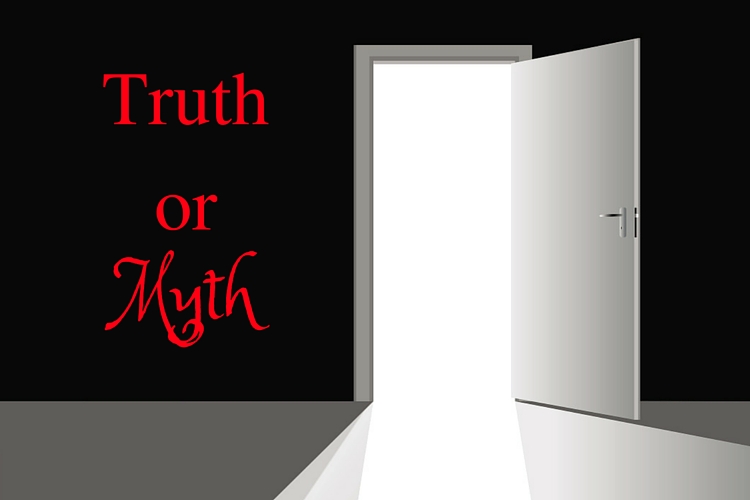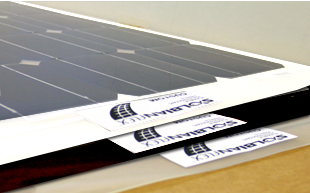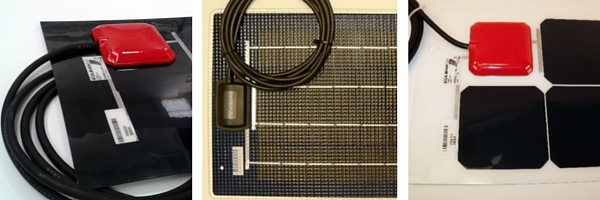10 Myth Busters - Solar Panels on Boats
 I've just come across yet another sailing magazine article giving inaccurate and misleading information on solar power for boats. (Why don't they bother to do some research and ask the real experts?) So here is a list of ten myths and busts in an effort to set the record straight.
I've just come across yet another sailing magazine article giving inaccurate and misleading information on solar power for boats. (Why don't they bother to do some research and ask the real experts?) So here is a list of ten myths and busts in an effort to set the record straight.
MYTH 1 - Glass solar panels with aluminum frames are the most efficient
BUST - No, no, no! The type of cell determines how efficient a solar panel is, not how it is constructed. Coastal offers three types of panels all made with the highest available efficiency SunPower® cells:
1) aluminum-framed glass panels,
2) razor -thin walk-on panels, and
3) flexible panels for installation in canvas areas like biminis.
All three types enjoy the same high efficiency because they all use the same cells with 22.5% efficiency. Glass panels are more common and less expensive, but not necessarily more efficient.
MYTH 2 - You can't walk on solar panels.
BUST - In theory you can walk on any type of solar panel, but either you or the panel, or both, might not be very happy with the outcome! You definitely don't want to walk on aluminum-framed glass panels, but other types are designed specifically to be walked on, like Solara's Standard and Power M series. These are designed for high traffic areas (no high heels please!), while some other manufacturers say that you may only "step on" their panels occasionally.
MYTH 3 - The wattage rating of the panel indicates how many watts it will produce when it is in sunlight.
BUST - Oh, if only! No, the wattage rating of a solar panel is what it might just possibly produce in the highly unlikely event that absolutely perfect conditions exist. The Standard Test Conditions, known as STC, are a defined amount and quality of sunlight, plus a set temperature, and these are replicated in a testing machine where panels get tested. STC conditions are akin to being on the equator at midday on the equinox with the temperature at zero degrees.
MYTH 4 - So, to estimate the daily yield of a panel you take, say, 80% of the watts rating times 6 (hours sunlight) right?
BUST - There are just too many variables to come up with a definitive formula to estimate daily yield, and different cells work differently in low light, low sun angle, and high heat conditions. Having worked the numbers many different ways, we came up with the following general guidelines, which so far have proved to be quite accurate. To calculate daily 12v amp/hour yield:
- For panels with SunPower® cells divide panel wattage by 3
- For panels with standard monocrystalline cells divide wattage by 4
- For panels with polycrystalline cells divide wattage by 5
Those numbers assume a "good" solar day with a full-time load. No load - no solar output!
MYTH 5 - Those totally unrealistic wattage ratings are used as an intentionally misleading sales gimmick.
BUST - Actually, solar panels are rated that way so that if a number of them are connected together in an array, the wiring, fusing, etc. can be sized for the highest possible output. It's a safety issue. Boring, I know, but it makes sense.
MYTH 6 - Whatever wattage a solar panel is advertised to be, then that is what it produced when tested.
BUST - Ha! No way! No two cells or solar panels are identical. The watt rating is a nominal rating for that batch or design of panel, and will vary within the manufacturers' published Power Tolerance. If a 120 watt panel has a negative Power Tolerance of -10%, it might be capable of only producing 108 watts at STC conditions. Solara Power M and Ultra series panels, together with Solbian SP panels, all have Power Tolerances of -5%/+5%. Positive Power Tolerances are not really relevant unless you really want to believe that your pet panel might produce 10% or more than its rating!
MYTH 7 - There will be much better, more efficient and less expensive cells and panels available soon
BUST - There has been very little progress in silicon solar cell efficiency over the past 25 years, and nothing will be happening any time soon. There are some exciting new developments in other solar technologies, like thin-film, but they are still lower efficiency than what we have now, and are still in the research phase and so a long way from being available on the general market. Cost seems to be the driving factor, as once efficiencies approach the sort of numbers we have now, the focus shifts to lowering production costs. It's a very, very competitive market, with a lot at stake. Remember Solyndra?
MYTH 8 - Any shading will shut down the output of a solar panel.
BUST - It's all proportional. Light shading will reduce a panel's output a little, while heavy shading will reduce the output to greater degree. Shading on one portion of a cell will not reduce output as much as shading an entire cell. Unless a cell or group of cells is completely covered by an opaque object like canvas, a towel, bathing suit, Albatross poop, etc., there will still be some output from the panel proportional to the amount of shading.
MYTH 9 - Solar is a bit of a joke on boats as it can't do much except to give the captain some feel-good greenie vibes.
BUST - Rubbish! Use the best panels with the highest output and you might cover all your daily power needs. Do it once- Do it right.
MYTH 10 - You can't get solar panels in different colors.
BUST - Colors no, but different shades, yes. We have panels with black cells on either white, black, or clear backgrounds. We could try pink cells I guess, but I fear that the results would be only just a tad better than if we'd used cabbage leaves.
UPDATE: Technology is now available to color your panels to match your teak deck or dark blue hardtop, for example, without too, too much loss in performance.


By accepting you will be accessing a service provided by a third-party external to https://www.coastalclimatecontrol.com/